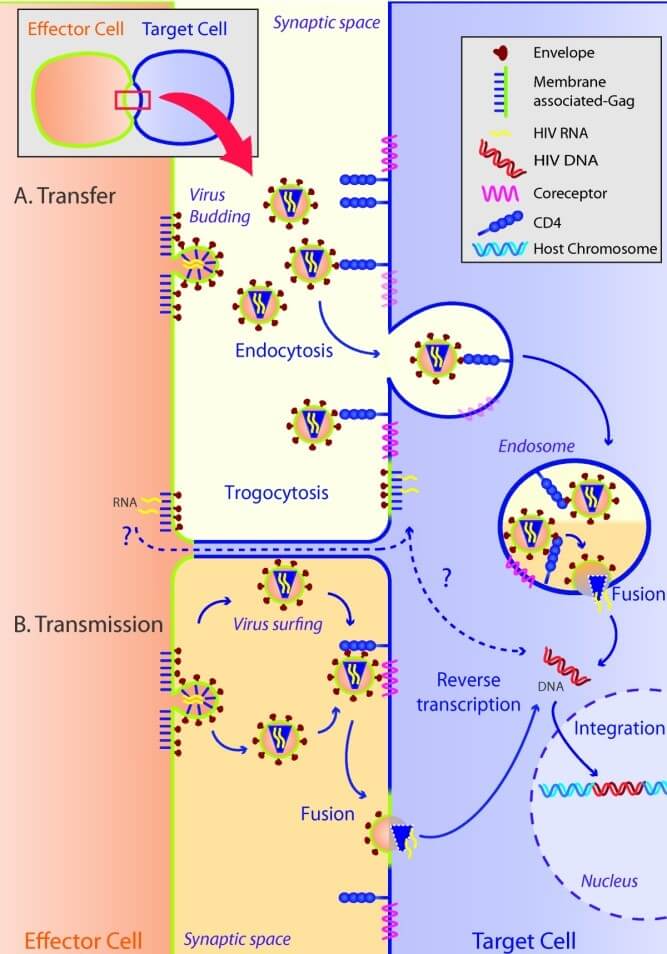Mempro™ Human Immunodeficiency Virus (HIV) for Virus-like Particles (VLPs)
As a pioneer and the undisputed global leader in virus-like particles (VLPs) research, Creative Biostructure offers tailored Mempro™ VLPs derived from human immunodeficiency virus (HIV). Scientists from Creative Biostructure can provide various services from VLPs design & production to VLPs characterization of HIV.
VLPs are analogous to viruses without viral genetic materials and they can’t replicate in the hosts. Usually, VLPs enable to self-assemble by expressing viral structural proteins, capsid or envelope for example. Several cell culture systems are used to generate VLPs: mammalian cell lines, yeast and plant cells, insect cell lines and bacteria. Due to the special feature of VLPs, they are important in the progress of vaccines, virus research, therapy and lipoparticle technology.
HIV is a lentivirus belonged to the retroviridae virus family, and it can infect crucial cells in the human natural immune system and lead to AIDS (acquired immunodeficiency syndrome).
 Figure 1. Steps of HIV transmission. (Retrovirology 2009)
Figure 1. Steps of HIV transmission. (Retrovirology 2009)
- Genome Structure of Human Immunodeficiency Virus (HIV)
HIV has a coarsely spherical structure with a diameter of about 120 nm, however HIV is particularly different from other retroviruses, and it’s about 60 times smaller than a red blood cell. The virus consists of two copies of positive single-stranded RNA, and the virus's nine genes are encircled by a capsid which is made up of 2,000 copies of the viral protein p24. The single-stranded RNA is firmly tied to enzymes required for generation of virion and it’s also bound to nucleocapsid proteins, p7.
- Infection of Human Immunodeficiency Virus (HIV)
HIV infects crucial cells in the human immune system, including specifically CD4+ T cells, dendritic cells and macrophages. Through numerous approaches such as apoptosis of uninfected bystander cells and direct viral killing of infected cells, the levels of CD4+ T cells decrease. CD4+ T cells are vital members among them, if too many CD4+ cells are destroyed, the body can’t defend itself against infection any more. Finally, the HIV infection can lead to AIDS and people with AIDS may die.
- Spread of Human Immunodeficiency Virus (HIV)
There are two routes for HIV spreading between CD4+ T cells: cell-to-cell spread and cell-free spread. During the cell-free spread, virus particles firstly bud from an infected T cell, then enter the blood, eventually infect another T cell by a chance encounter. It has reported two pathways of cell-to-cell transmission, one is an infected T cell transmit virus immediately to a target T cell via a virological synapse, the other is transmitting HIV to T cells under the help of antigen presenting cell (APC).
Creative Biostructure can perform high quality Mempro™ VLPs of HIV based on the advanced VLPs platform. Please feel free to contact us for a detailed quote.
References:
Santi L, Huang Z, Mason H. Virus-like particles production in green plants[J]. Methods, 2006, 40(1): 66-76.
Evans A S. Does HIV cause AIDS? An historical perspective[J]. JAIDS Journal of Acquired Immune Deficiency Syndromes, 1989, 2(2): 107-113.
Douek D C, Roederer M, Koup R A. Emerging concepts in the immunopathogenesis of AIDS[J]. Annual review of medicine, 2009, 60: 471.